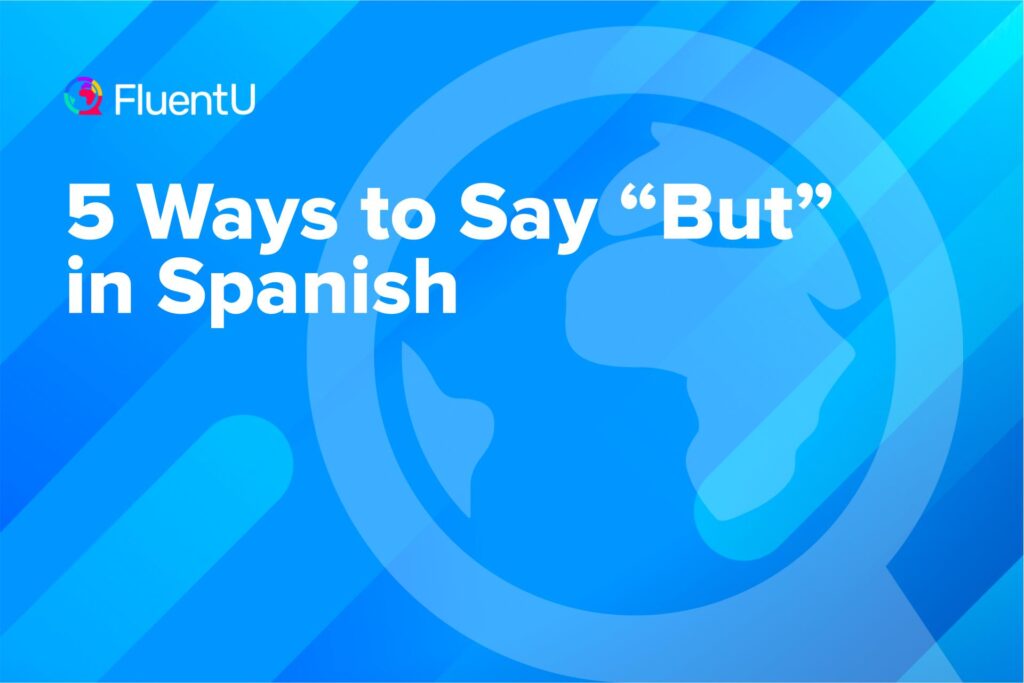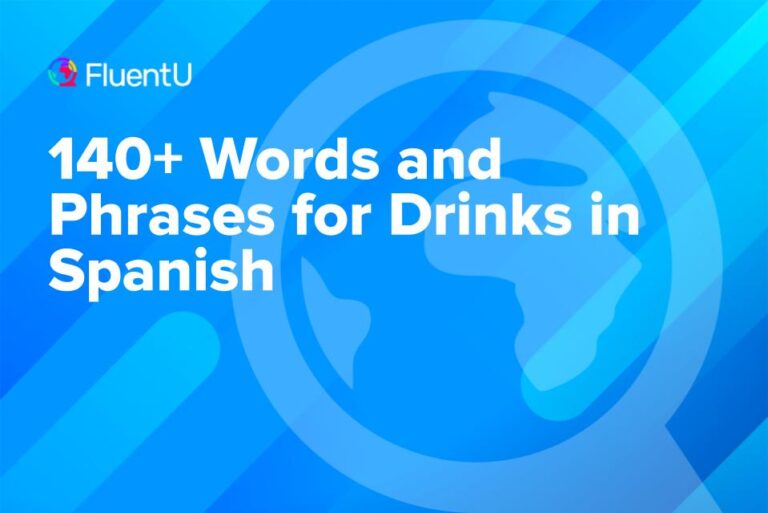5 Ways to Say “But” in Spanish

It might not come as a surprise that “but” is one of the most common words in the English language.
You have to assume the same goes for Spanish, so you should learn the equivalents.
That’s right: equivalents, plural. Spanish has five words that capture what the English catch-all “but” expresses.
But don’t panic! Learning the distinctions between these similar words is easy with a bit of practice. All you have to do is learn the words for “but,” “but rather” and “except” in Spanish.
Download: This blog post is available as a convenient and portable PDF that you can take anywhere. Click here to get a copy. (Download)
“But” in Spanish: Pero, Sino and Excepto / Salvo / Menos
Sure, it’s a little more complicated than in English with five “but” word choices, but if you learn the individual meaning of these five words, you’ll have “but” in Spanish under your belt (so to speak).
Pero : the Big “But”
Meaning: But
Pero is the most common way to say “but” in Spanish.
And fortunately, it’s easy to master: Simply put, pero is used when the second part of the sentence doesn’t contradict the first.
To illustrate this point, let’s take this English sentence:
I have dogs, but I don’t have cats.
The first part of the sentence establishes the fact that you have dogs and the second part does nothing to challenge this statement because having a dog or having a cat aren’t mutually exclusive. Therefore, the sentence in Spanish would be:
Tengo perros, pero no tengo gatos.
Still a bit confused? We’ll let you in on a little cheat: If you can replace “but” in English by breaking the sentence into two and starting the second with “however,” then you should use pero in Spanish.
Let’s look back at our original example. “I have dogs, but I don’t have cats” can be rephrased as “I have dogs. However, I don’t have cats” and retain its original meaning. Therefore, pero makes sense in the Spanish translation.
Here are a few more sentences with pero:
Me gusta la paella, pero a él no. — I like the paella, but he doesn’t.
Tiene clase mañana, pero no va a ir. — He has class tomorrow, but he’s not going to go.
Queremos ir a Puerto Rico, pero no tenemos suficiente dinero. — We want to go to Puerto Rico, but we don’t have enough money.
Sino : For Making Contradictions
Meaning: But rather
If you’ve made a hobby out of correcting other people, then you’re going to love sino.
Though they both translate to “but,” sino functions very differently from pero. Whereas pero is used when the second part of the sentence doesn’t contradict the first, sino is used when a contradiction exists.
Let’s take a look at an example:
No estoy en Uruguay, sino Paraguay. — I’m not in Uruguay, but Paraguay.
Sino is used in this sentence because the fact that you’re in Paraguay means that you’re not in Uruguay. Here, the second part of the sentence (bring in Paraguay) negates the first (being in Uruguay).
Just like the “however” trick with pero, there’s a shortcut you can use with sino, as well: If the word “but” can be replaced by “but rather” in the English sentence, then you should use sino in the corresponding Spanish sentence.
Since the English sentence above can be logically changed to “I’m not in Uruguay, but rather Paraguay,” the Spanish translation makes sense.
Now, are you ready for a twist?
Sino is only used when “but” is followed by a noun or non-conjugated verb. If there’s a conjugated verb in there, sino changes to sino que. But don’t worry, all of our rules about sino still apply with sino que.
Ready for an example?
No caminaron, sino que corrieron. — They didn’t walk, but they ran.
Sino is used here because the fact that they ran means they couldn’t have walked. And since corrieron is a conjugated verb, the word que is added after sino.
Before we move on, there’s one more use of sino and sino que you should know about: The English structure “Not only x, but also y” is rendered in Spanish as “No solo x, sino y también.”
For example:
No solo hablo español, sino francés también. — I speak not only Spanish, but also French.
Let’s take a look at some more sentences with sino:
No somos de Los Ángeles, sino de Nueva York. — We’re not from Los Angeles, but rather New York.
No salta, sino que vuela. — It doesn’t jump, but rather flies.
No solo tiene pan tostado, sino huevos también. — He doesn’t just have toast, but eggs too.
Excepto / Salvo / Menos : For Making Exceptions
Meaning: Except
Excepto, salvo and menos can all be used when stating exceptions to a general rule. In other words, they’re a lot like the English “except.”
In English, “but” and “except” act as synonyms in many cases. When this happens, excepto, salvo and menos all work. Though these three words have other definitions as well, they can all be used to mean “but” with no difference in meaning.
To drive this point home, let’s try translating this sentence into Spanish:
Everyone but Jorge said yes.
Since “but” can be replaced by “except” and still make sense, we can use excepto, salvo or menos. We therefore have three possible ways to write this sentence:
Todos excepto Jorge dijeron que sí.
Todos salvo Jorge dijeron que sí.
Todos menos Jorge dijeron que sí.
Here are a few more examples that can use any one of these words:
Nos gustan todos los animales excepto los chanchos. — We like all the animals but the pigs.
Han ido a cada estado salvo Nevada. — They have been to every state but Nevada.
Tengo tiempo libre cada día menos el martes. — I have free time every day but Tuesday.
Quiz Yourself: Choose the Correct “But” in Spanish
We’ve covered a lot of ways to say the word “but.” Are you ready to practice all these new words and expressions at the same time?
Choose the right Spanish “but” in this multiple choice quiz:
Want to hear “but” in Spanish in context in authentic videos made for a by fluent speakers? FluentU has a large video library that they’ve turned into fun and effective language learning lessons.
FluentU takes authentic videos—like music videos, movie trailers, news and inspiring talks—and turns them into personalized language learning lessons.
You can try FluentU for free for 2 weeks. Check out the website or download the iOS app or Android app.
P.S. Click here to take advantage of our current sale! (Expires at the end of this month)

And that’s all there is to it! Put your new words to use in conversations and never confuse your Spanish “but” expressions again.
Download: This blog post is available as a convenient and portable PDF that you can take anywhere. Click here to get a copy. (Download)
And One More Thing…
If you've made it this far that means you probably enjoy learning Spanish with engaging material and will then love FluentU.
Other sites use scripted content. FluentU uses a natural approach that helps you ease into the Spanish language and culture over time. You’ll learn Spanish as it’s actually spoken by real people.
FluentU has a wide variety of videos, as you can see here:

FluentU brings native videos within reach with interactive transcripts. You can tap on any word to look it up instantly. Every definition has examples that have been written to help you understand how the word is used. If you see an interesting word you don’t know, you can add it to a vocab list.

Review a complete interactive transcript under the Dialogue tab, and find words and phrases listed under Vocab.

Learn all the vocabulary in any video with FluentU’s robust learning engine. Swipe left or right to see more examples of the word you’re on.

The best part is that FluentU keeps track of the vocabulary that you’re learning, and gives you extra practice with difficult words. It'll even remind you when it’s time to review what you’ve learned. Every learner has a truly personalized experience, even if they’re learning with the same video.
Start using the FluentU website on your computer or tablet or, better yet, download the FluentU app from the iTunes or Google Play store. Click here to take advantage of our current sale! (Expires at the end of this month.)







